Science Highlights, January 8, 2014
Awards and Recognition
Materials Physics and Applications
Database for students, libraries features Los Alamos metamaterials research
Awards and Recognition
Conradson and Henson named AAAS Fellows
The Chemistry Division of the American Association for the Advancement of Science (AAAS) has elected Steven Conradson (Materials Science in Radiation and Dynamics Extremes, MST-8) and Bryan Henson (Physical Chemistry and Applied Spectroscopy, C-PCS) to the rank of Fellow. The AAAS Council elects members whose “efforts on behalf of the advancement of science or its applications are scientifically or socially distinguished.” The honor is bestowed upon AAAS members by their peers for significant contributions to science and technology.
Steven Conradson’s citation reads: “For distinguished contributions to physical inorganic chemistry with particular emphasis on X-ray absorption spectroscopy and its applications in biology, solid-state physics, and actinide chemistry.”
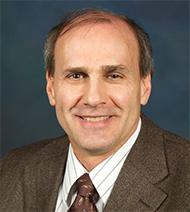
Steven Conradson
Conradson obtained a Ph.D. in Physical Chemistry from Stanford University. He joined Los Alamos in 1985 after a National Institutes of Heath postdoctoral fellowship at Harvard University. Conradson has participated in multi-institutional projects involving environmental, separations, and fundamental actinide chemistry. As project leader of X-ray absorption fine structure spectroscopy, he has worked with collaborators from many countries to study radioactive materials at X-ray light sources. In 1993, he pioneered the routine, large-scale application of synchrotron X-ray techniques to determine local structure and chemical speciation in radioactive samples. Conradson also leads MST-8’s Radiation Science, Nuclear Materials and Fuels Experimental Team, which recently reported a number of unique and extreme behaviors in UO2(+x). This discovery is remarkable considering that this industrial chemical is one of the most extensively studied compounds in materials science. Technical contact: Steven Conradson
Bryan Henson’s citation reads “For distinguished contributions in the fields of physical chemistry and molecular spectroscopy, including the application of second harmonic generation (SHG) to the study of organic explosives.”
Henson received a Ph.D. in Chemistry from the University of California – Los Angeles. He joined LANL in 1991 as a DOE Global Climate Change Distinguished Postdoctoral Fellow. His early career research used second harmonic generation techniques to interrogate stratospheric ice formation as a method to study global warming. Henson later applied the tools he developed for climate chemistry to high explosives research. He has garnered numerous external awards and published over 75 papers, including five Physical Review Letters. NNSA, DOE, DoD, and other organizations have recognized him for his contributions to the study of thermal response in explosives. Technical contact: Bryan Henson
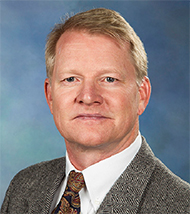
Bryan Henson
AAAS is a nonprofit professional society dedicated to the advancement of scientific and technological excellence across all disciplines, and to the public’s understanding of science and technology. Its membership comprises more than 134,000 scientists, engineers, science educators, policymakers and other professionals worldwide. Being elected as a Fellow in the AAAS is a significant recognition from a distinguished peer group. This year in the Chemistry category, Conradson and Henson were among 40 scientists chosen nationwide. In all 388 scientists from a broad range of disciplines will be honored in February at the 2014 AAAS Annual Meeting in Chicago. The honor of being elected a Fellow began in 1874 and is acknowledged with a certificate and rosette. AAAS News Release on the 2013 Fellows:
http://www.aaas.org/news/aaas-council-elects-388-new-aaas-fellows
Crooker honored as Optical Society of America Fellow
Scott Crooker (Condensed Matter and Magnet Science, MPA-CMMS) has been chosen as a 2014 Fellow of the Optical Society of America (OSA). He was recognized for “the development and application of magneto-optical spectroscopies to colloidal quantum dots and to electron spin transport and noise in semiconductors.”
The 71 new OSA Fellows were selected based on their overall impact on optics, as gauged through specific scientific, engineering, and technological contributions, significant publications or patents related to optics, technical leadership in the field, and service to OSA and the global optics community. “The distinction of OSA Fellow signifies members who are at the top of the optics and photonics profession,” said OSA President Donna Strickland in a news release.
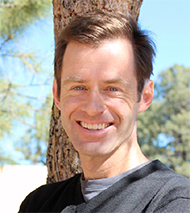
Scott Crooker
Crooker holds a Ph.D. in Physics from the University of California – Santa Barbara. He joined the Laboratory in 1998 as a Director's Postdoctoral Fellow at the National High Magnetic Field Laboratory (NHMFL) and became a staff member in 2000. At the NHMFL, Crooker focuses on the development of ultra-sensitive optical techniques to measure the static and dynamic properties of electron spins and magnetization in semiconductor materials and colloidal nanocrystals. Crooker is a Fellow of the American Physical Society and a recipient of the 2007 Laboratory Fellows’ Prize for Research.
Founded in 1916, the OSA has more than 18,000 members and produces publications and conference papers on the science of light and its applications. The number of Fellows, who are nominated by other society members, is restricted to 10% of the total OSA membership. Crooker is only the fifth LANL employee to receive the honor of American Optical Society Fellow. Technical contact: Scott Crooker
Chadwick, Kuske, Pabian, and Reeves selected as Laboratory Fellows
Laboratory Director Charles McMillan appointed new Fellows Mark Chadwick, Cheryl Kuske, Geoff Reeves, and Frank Pabian as Los Alamos National Laboratory Fellows, a distinguished organization that honors outstanding contributions to science and technology. Laboratory Fellows are lauded for their sustained, high-level achievements and exceptional promise. Fewer than two percent of the Lab’s technical staff attain fellow status, and for 30 years the Fellows’ organization has helped guide the Laboratory’s scientific direction. The fellows organize symposia and public lectures and administer prizes for outstanding research and leadership in science and engineering. This year’s inductees are described in the following paragraphs.
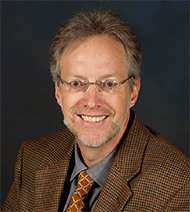
Mark Chadwick
Mark Chadwick (Weapons Physics, ADX) attained recognition for his contributions in nuclear physics. He has made important contributions to the evolution of nuclear science, supported by his nuclear models and cross section databases. Chadwick’s work has been applied in stockpile stewardship, nuclear engineering and reactor safety and global security. His research also aided the development of medical technologies for radiation therapy. Chadwick’s nuclear physics work supports collaboration among the national laboratories, and he chairs national and international nuclear data efforts. He received DOE’s E. O. Lawrence award for advancing an understanding of fission product yields and other key nuclear reactions resulting in the resolution of a long-standing problem in national security. He has organized 11 international conferences, and has over 110 peer-reviewed papers that have received 5000 citations – including one journal article that alone has been cited more than 900 times. He is a Fellow of the American Physical Society.
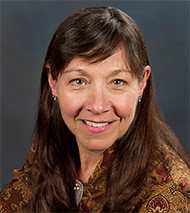
Cheryl Kuske
Cheryl Kuske (Bioenergy and Biome Sciences, B-11), is an environmental microbiologist who built a research program that touches many scientific areas important to Los Alamos: biothreat detection, climate change ecology, environmental bioremediation, microbial genetics and genomics and information science and technology. Kuske is a pioneer in the field of microbial ecology, and her understanding of complex microbial communities in the environment led to major developments in biodefense and national security, including biothreat detection technologies that can be used in the field. Her expertise with difficult-to-culture and genetically diverse acidobacteria (abundant in soils) laid the foundation for important molecular research. Cited approximately 7000 times in articles in which she is often first author, Kuske has continually supported scientific growth and success at the Lab, recruiting and mentoring many of our best young researchers. Kuske has won the Laboratory’s Fellows Prize and Distinguished Patent awards.
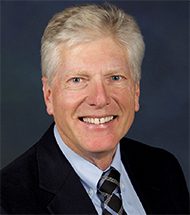
Frank Pabian
Frank Pabian (International Research and Analysis, IAT-1) is recognized for his support of global security. A geospatial and remote-sensing specialist, he developed and applied new methodologies and science-based solutions to nuclear nonproliferation. His extensive nonproliferation intelligence and satellite-imagery analysis have garnered notable awards from the Central Intelligence Agency (gold medal), and he was among the first analysts to be named to the Director of National Intelligence’s collaboration network Hall of Fame. Pabian has received LANL’s Distinguished Performance Awards. He served as Nuclear Chief Inspector for the United Nation’s International Atomic Energy Agency (IAEA) in Iraq. He helped locate, map, and evaluate weapons of mass destruction development for the IAEA, and his work helped secure a Nobel Peace Prize for the nuclear watchdog agency.
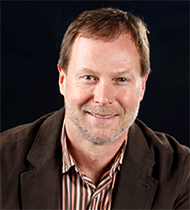
Geoff Reeves
Geoff Reeves (Space Science and Applications, ISR-1) is a space physics leader who supports the mission of the Laboratory’s International Space and Response Division. He made Los Alamos space weather data available to the broad scientific community, supporting worldwide advances. His work has been cited more than 5,600 times. A Los Alamos Fellows Prize recipient, Reeves helped solve a 50-year-old mystery about how electrons within Earth’s Van Allen radiation belts can become energetic enough to kill orbiting satellites. His research may help make space weather forecasting possible and accurate for better satellite protection. To further support integrated space situational awareness, Reeves led a team that developed the Dynamic Radiation Environment Assimilation Model (DREAM) to predict hazards from the natural space environment or high-altitude nuclear explosions.
Chemistry
Researchers explore alternative portal monitor technology for fissile material
Los Alamos researchers and collaborators are part of a national effort to develop alternative portal monitor technologies, not dependent on helium-3 (3He) neutron counters, to be used at ports of entry. Portal monitors in general are designed to detect illicit movement of certain special nuclear materials, in this case fissile material, which could potentially pose a threat to national security. The customary methodology for detecting fissile material is to directly observe the prompt and delayed neutrons that always accompany both spontaneous and induced nuclear fission. The high neutron absorption cross section for 3He makes it an ideal candidate for this task, but its current scarcity is making it increasingly difficult to keep up with demand. One alternative to the direct detection of these neutrons is to employ a neutron-to-gamma converter and instead measure the high multiplicity gamma-ray cascade following neutron capture.
Natural cadmium is often used as shielding against thermal neutrons because of the large cross section of cadmium-113 (113Cd) for capture of neutrons with energies below 1 eV. Cadmium is also used in detectors sensitive to thermal neutrons, such as cadmium doped plastic scintillation detectors, crystal scintillation detectors such as CdWO4 and semiconductor detectors such as CdZnTe. The 113Cd(n, a)114Cd reaction leads to emission of a-ray cascades from the excited compound nucleus 114Cd. Intensity distribution of the a-ray cascades must be known with good accuracy to model the secondary radiation produced in the shielding as well as the response of neutron detectors which contain cadmium.
As part of development of the ENGA portal monitor based on neutron-to-gamma conversion, the team performed two neutron-capture experiments at the DANCE (Detector for Advanced Neutron Capture Experiments) detector array at LANSCE. They used targets of natural cadmium and CdO enriched to 113Cd. Comparison of the measured a-ray spectra with predictions from the statistical model enabled the researchers to study the properties of the cascade transitions following capture from s-wave resonances in 111Cd and 113Cd. The team also determined the a-ray intensity distribution following capture of thermal neutrons on 113Cd, as shown in Figure 1. This distribution can be used to generate a-ray cascades in radiation transport codes for simulating the response of cadmium based detectors or shielding.
Figure 1. Intensity distribution of transitions following capture of thermal neutrons on 113Cd as a function of the excitation energy Ex and the -ray energy E. Arrows depict an example of generating a cascade by selecting sequentially the transition energies E1, E2 and E3, starting from the neutron-capture level and ending at the ground state.
References:
- “System for Detecting Special Nuclear Materials”, LANL Patent Application, Docket Number S-121,
- “γ -ray Cascade Transitions in 112Cd and 114Cd Following Resonance Capture of Epithermal Neutrons,” Physical Review C 87, 054603 (2013); doi: 1103/PhysRevC.87.054603.
- “Cascade γ-Rays Following Capture of Thermal Neutrons on 113Cd,” Physical Review C 88, 057602 (2013); doi: 10.1103/PhysRevC.88.057602.
Researchers include G. Rusev, M. Jandel, C. W. Arnold, T. A. Bredeweg, and A. W. Moody (Nuclear and Radiochemistry, C-NR); A. Couture, S. M. Mosby, T. N. Taddeucci, and J. L. Ullmann (Neutron and Nuclear Science, LANSCE-NS); and M. Krtička (Charles University, Czech Republic).
NNSA NA-22 funded the work, which supports the Lab’s Global Security mission area and the Nuclear and Particle Futures and Science of Signatures science pillars. Technical contact: G. Rusev
Earth and Environmental Sciences
Understanding precursors to earthquakes
Large earthquakes pose a serious threat to large metropolitan areas such as Los Angeles and Seattle. Paul Johnson (Geophysics, EES-17) and his team are studying precursors that take place prior to shear-induced failure in laboratory faults. These experiments serve as a model to understand the physics of precursors observed before some earthquakes. Geophysical Research Letters published their findings.
Precursors to stick-slip (the spontaneous jerking motion that can occur while two objects are sliding over each other) events are seen in the field, in laboratory experiments, and in numerical simulation. Observations of precursors to slip may help predict periods of increased seismic hazard. Although precursors have been observed for a significant number of earthquakes, many earthquakes apparently exhibit no precursor activity. This fact may be due to incomplete seismic catalogs, because precursors can be very small in magnitude. The results of many studies suggest that the dynamics of granular media may be key to understanding systems that exhibit stick-slip behavior.
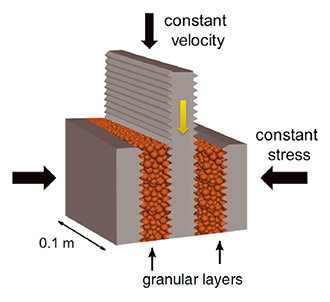
Figure 2. Experimental configuration. The biaxial shearing sample is comprised of a three block system with two layers of glass beads. The central block is driven at a constant displacement rate. The stress normal to the layers, applied as indicated by arrows, is maintained constant.
Figure 3. Discrete element simulation of the fault gouge material at the time of stick-slip failure. The brighter colors are associated with large grain re-arrangements (increased kinetic energy).
The grain rearrangements observed in the simulation and surmised from the experiments can be viewed as the result of bead asperities that resist the slow slip, leading to local failures that produce precursors, and eventually failing catastrophically in a stick-slip event. The researchers concluded that the experiments resemble interplate precursor activity observed in the earth and indicate that a more careful inspection of high quality data preceding interplate events may prove useful. Precursors may be very small in magnitude and therefore demand better instrumentation in earthquake prone regions. Providing information regarding a period of time of increased earthquake hazard could allow time for preparation for the inevitable. This research provides insight into how precursors take place, and provides guidance regarding how to look for them in the earth.
Reference: “Acoustic Emission and Microslip Precursors to Stick-slip Failure in Sheared Granular Material,” Geophysical Research Letters 40, 5627 (2013); doi:10.1002/2013GL057848. The American Geophysical Union (AGU) also featured the work as an AGU Research Spotlight. Researchers include P. A. Johnson, R. A. Guyer, P-Y. Le Bas, and D. T. Trugman (EES-17); B. Ferdowsi and J. Carmeliet (Swiss Federal Institute of Technology and Swiss Federal Laboratories for Material Science and Technology); B. Kaproth, M. Scuderi, and C. Marone (Pennsylvania State University), and M. Griffa (Swiss Federal Laboratories for Materials Science and Technology).
Laboratory Directed Research and Development (LDRD) funded the Los Alamos portion of the research, which supports the Lab’s Global Security mission area and the Science of Signatures science pillar. Technical contact: Paul Johnson
LANSCE
Improved understanding of a semiconductor used in infrared detectors
At the Lujan Neutron Scattering Center, a combined study of high-pressure neutron diffraction, electrical resistance measurement, and first-principles calculation provides new insights into structural and electronic transitions in lead sulfide (PbS). PbS is a semiconductor used in infrared detectors. The material undergoes both structural and electronic phase transitions under pressure. However, the nature of the transitions remains a subject of debate. The experiments and complementary models published in the journal Inorganic Chemistry offer a description of the phase transition mechanisms and advance the understanding of lead-based semiconductors.
The researchers observed phase-transition induced elastic softening and direct to indirect band gap transition in PbS. First-principles calculations simulated the elastic properties and band structures of PbS. The scientists conclude that both cubic and orthorhombic phases are semiconductors, but they exhibit features of direct and indirect band gaps, respectively. Phase transition induced elastic softening in PbS is likely to be associated with enhanced metallic Pb - Pb bonding in the orthorhombic phase. Phase transition also leads to an anomalous drop in electrical conductivity in orthorhombic PbS, which the researchers attribute to the lower crystal symmetry and the enlarged band gap in the Cmcm phase. Based on the results and calculations, the team proposed a new model for the B1→ B33 → B2 phase transitions. They suggest that the phase transitions paths involve translation of a trigonal prism in the B1 phase and motion of the next-nearest neighbor Pb atom into {SPb7} coordination and subsequent lattice distortion in the B33 phase.
Figure 4. (Left): Pressure-volume data from high-pressure neutron diffraction and ab initio simulations. (Right): Simulated band structures.
Reference: “Phase-Transition Induced Elastic Softening and Band Gap Transition in Semiconducting PbS at High Pressure,” Inorganic Chemistry 52, 8638 (2013); doi: 10.1021/ic400801s. Researchers include Jianzhong Zhang (Lujan Center, LANSCE-LC), Shanmin Wang, Yi Zhang, Andrew Alvarado, Jeevake Attapattu, Liping Wang, Changfeng Chen, and Yusheng Zhao (University of Nevada, Las Vegas); and Duanwei He (Sichuan University, China)
This work benefited from the use of the High-Pressure Preferred Orientation Diffractometer (HIPPO) instrument at the Lujan Neutron Scattering Center at LANSCE funded by the DOE Office of Basic Energy Sciences. The research supports the Lab’s Energy Security mission area and the Materials for the Future and Nuclear and Particle Futures science pillars. Technical contact: Jianzhong Zhang
Materials Physics and Applications
Database for students, libraries features Los Alamos metamaterials research
“Today’s Science,” a subscription-only online database for students, features Hou-Tong Chen (Center for Integrated Nanotechnologies, MPA-CINT) in two articles about metamaterials. The “Metamaterials Make Light Misbehave” article describes how Los Alamos scientists have created three tiny devices that “twist and bend light in ways never seen in nature,” with applications for imaging, sensing, and communications systems. The article defines metamaterials as “artificially engineered materials with unusual properties not seen in ordinary matter.”
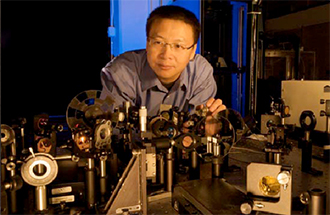
Photo. Hou-Tong Chen works in a materials laboratory.
A separate feature story in the series “Conversations With Scientists” spotlights Chen, starting with his physics studies in China. Chen credits Richard Averitt (his LANL postdoc supervisor, now a Boston University professor) and Willie Padilla (a former LANL postdoctoral researcher, now a professor at Boston College) for sparking his interest in metamaterials. “I realized that metamaterials could have huge potential to solve many major problems that had stalled the development of terahertz science and technology,” Chen said.
In the question-and-answer piece, Chen summed up recent developments in his field. Scientists have demonstrated the principles of light bending in the wrong direction and cloaking with metamaterials; however, “finding practical applications for them is probably a long way off, maybe even more than 20 years.” Chen’s recent work may change such a situation by finding some important applications in the near future, such as integrated flat optics for manipulation of terahertz and infrared waves. Terahertz radiation has potential applications in secure communications, imaging, and diagnostics, but finding materials suitable for terahertz devices is a tremendous obstacle.
“Today’s Science,” produced by Facts on File News Services, aims to “bridge the gap between the science taught in the classroom and real-world discoveries,” according to the company website.
References: “Metamaterials Make Light Misbehave,” and “Hou-Tong Chen: Forging Metamaterials,” Today’s Science. Infobase Learning, August 2013. Web. 12 August 2013.
Laboratory Directed Research and Development (LDRD) and the DOE Office of Science, Center for Integrated Nanotechnologies supported different aspects of the LANL work. Technical contact: Hou-Tong Chen
Materials Science and Technology
LANL hosts High Performance Research Reactor Working Group meeting
The Global Threat Reduction Initiative (NNSA NA-21) requested that LANL host this year’s U.S. High Performance Research Reactor (HPRR) Working Group meeting. The meeting supports the NA-21 highly enriched uranium (HEU) minimization effort by enabling conversion of HPRRs from HEU to low enriched uranium fuel (LEU). This 60-person, three-day technical and operations meeting included the NA-212 CONVERT Federal Program Manager, Technical Pillars for Fuel Development, Fuel Fabrication Capability and Reactor Conversion, NRC representatives, representatives from the five HPRRs and performing organization representatives (Los Alamos, Idaho National Laboratory, Pacific Northwest National Laboratory, Argonne National Laboratory, Brookhaven National Laboratory, Savannah River National Laboratory, Y-12 National Security Complex, and Babcock & Wilcox). The presentations spanned the range from reactor safety analyses through high level summaries of research at each contributing organization.
Figure 5. Variation of energy release as a function of bulging area (A) for Al/DU-10wt%Mo sample AU09. (Plasma sprayed Zr)
LANL results by D. Alexander and K. Clarke (Metallurgy, MST-6) showed for the first time the relationship between the degree of hot deformation on solid state bonding of a zirconium diffusion barrier to uranium alloy fuel foils. Researchers established a minimum hot deformation (80% cumulative strain) and demonstrated the separate effects of hot deformation and cold deformation. Plasma spraying studies by K. Hollis (MST-6) revealed that a plasma sprayed zirconium barrier could be applied to a prototypic two-foot long fuel foil. Opposed laser displacement sensors measured coated foil dimensions to within 1-micron resolution. C. Liu and M. Lovato (Materials Science in Radiation and Dynamic Extremes, MST-8) performed interface bond strength testing on a plasma sprayed coated fuel foil. They used a novel controlled bulge testing technique coupled with digital image correlation to demonstrate that interface fracture behavior of the plasma sprayed coatings is similar to that of coatings made using hot deformation. K. Clarke, J. Crapps, and B. Mihaila (MST-6) successfully used forming limit diagrams and finite element modeling to design and fabricate large formed cans for solid state bonding by hot isostatic pressing. C. Cross and M. Dvornak (MST-6) developed electron beam welding parameters and fixture design to support can-less solid-state bonding. D. Summa (Applied Engineering Technology, AET-6) reported development of ultrasonic measurement methods of a five-layer laminate as part of an effort in integrated intelligent machining. Signal processing using cepstral analysis imaged thinner features with higher resolution.
The meeting also featured round robin meetings of National Technical Pillars and NA-21 with each reactor group, and round robin meetings of the NRC with each reactor group. This meeting established the technical agenda for FY 2014. At the conclusion of the working group meeting, participants toured the Sigma complex’s integrated facilities for uranium processing.
NNSA NA-21 funded the Los Alamos work, which supports the Lab’s Global Security and Energy Security mission areas and the Materials for the Future science pillar. Technical contact: David Dombrowski
Physics
LANL diagnostic images neutrons from implosion experiment at National Ignition Facility
The goal of NNSA’s Inertial Confinement Fusion (ICF) program is to implode small quantities of thermonuclear deuterium tritium (DT) fuel to ignition conditions using lasers at the National Ignition Facility (NIF). The convergence of these capsules may be sufficient to produce temperatures and densities that initiate a thermonuclear burn wave in the DT plasma. If successful, these small capsules will release more energy than was input by the laser drive, potentially offering a new source of energy.As part of the program, the “high-foot” platform uses the laser pulse-shape capability of the NIF laser to create an indirect drive 3-shock implosion that is robust against instability growth involving the ablator and also modestly reduces implosion convergence ratio. It is called high foot because the laser drive creates higher drive strength early in time to stabilize the implosion process. A Los Alamos neutron diagnostic produced images of the burning plasma in the experiment.
The researchers measured a yield of 4x1015 neutrons in the record neutron yielding cryo-DT experiment, N130927, which was fired on September 28th. In this experiment the initial laser drive was larger than the point-design drive, resulting in an implosion along a higher adiabat than the NIF point-design ignition experiment. This modified drive was predicted to result in a hotter and therefore larger hot spot, which is more stable against Rayleigh-Taylor processes in the implosion hydrodynamics. This experiment had a yield and shape similar to pre-shot predictions.
The neutron imaging diagnostics provided size and shape information of the DT burning hot spot and created an image of the surrounding cold fuel. The team measured the source distribution of the lower energy neutrons to obtain the cold fuel image. These low energy neutrons are initially 14 MeV neutrons from DT fusion process occurring in the hot spot that have scattered and lost energy within the cold fuel. Scientists reconstructed the source distribution from the collected images to determine the size and shape of the hot spot and cold fuel. Because this diagnostic uses the fusion neutrons to form the images, the size and shape information improves as the neutron yield increases. Therefore, this record yielding experiment generated the highest quality neutron images recorded to date at NIF.
Figure 6. (Left): Hot spot distribution, (center): cold fuel distribution, and (right): the hot spot
The diagnostic obtained “raw” pinhole images of the hot spot. Researchers used the images with LANL’s newly developed multiple-pinhole reconstructions algorithms, which combine the statististics from these pinholes while taking into account the fact that each pinhole field of view is centered at a different position. Previous experiments had resulted in a toroidal hot spot. This measurement shows that the toroidal hot spot has been tuned out of these high-foot implosions. Pre-shot simulations predicted this oblate shape. Scientists used the same algorithms to reconstruct the cold fuel distribution.
Figure 6 shows the hot spot distribution, cold spot distribution, and the two distributions overlaid. This source reconstruction reveals a hot spot bubble of burning plasma surrounded by the cold fuel assembly. Only the neutron imaging diagnostic is capable of making this measurement, which is the first indication of the clean fuel assembly. This understanding of cold fuel distribution relative to the hot spot is critical for a proper interpretation of other nuclear and X-ray diagnostics in the drive toward ignition in the future.
Frank Merrill (Neutron Science and Technology, P-23) leads the Neutron Imaging Team in Physics Division. The NNSA Weapons Science Campaign 10 (Steven Batha, Los Alamos Program Manager) funds the LANL work, which supports the Lab’s Nuclear Deterrence and Energy Security mission areas and the Nuclear and Particle Futures and Science of Signatures science pillars. Technical contact: Frank Merrill
Theoretical
Modeling the origin of superbursts in neutron stars
Massive X-ray superbursts near the surface of neutron stars are providing a unique window into the operation of fundamental forces of nature under extreme conditions. Los Alamos researchers and former postdocs participated in an international team that is examining what powers these massive explosions. Understanding the origin of the explosions and the extreme state of nuclear matter in neutron stars yields insights about the fundamental forces in nature, especially on the astronomical/cosmological scale. The journal Nature published the findings online.Photo. A small, dense object only 12 miles in diameter is responsible for this X-ray nebula that spans 150 light years. At the center of this image made by NASA’s Chandra X-ray Observatory is a very young and powerful pulsar, known as PSR B1509-58. The pulsar is a rapidly spinning neutron star that is spewing energy out into the space around it. Image courtesy NASA.
A neutron star is created during the death of a giant star more massive than the Sun. The star is compressed to a tiny size, but it has gravitational fields exceeded only by those of black holes. In the intense, neutron-rich environment, nuclear reactions cause strong explosions that manifest themselves as X-ray bursts and the rare X-ray superbursts that are 1000 times more powerful.
The importance of discovering an unknown energy source of titanic magnitude in the outermost layers of accreting neutron star surfaces is heightened by the unresolved issue of neutrino masses, the recent discovery of the Higgs boson, and the fact that highly-neutron-rich nuclei with low-lying states enable “weak interactions,” prominent in stellar explosions. (The weak nuclear force is one of four fundamental sources, such as gravity, which interacts with the neutrinos; it is responsible for some types of radioactive decay.) Previously a common assumption was that that the energy released in these radioactive decays would power the X-ray superburst explosions. This was based on simple models of nuclear beta-decay, sometimes postulating the same decay properties for all nuclei.
In order for scientists to study weak interaction (beta-decay and electron capture) networks in neutron stars, detailed models of beta decay are required. It is necessary to take into account nuclear deformation, which is done for the first time in this type of study. Los Alamos scientists have carried out detailed calculations of the specific, individual beta-decay properties of thousands of nuclides, all with different decay properties, and created databases with these calculated properties. Nuclear-structure data input was calculated by models and codes used at Los Alamos to generate databases, which are used by LANL and non-LANL programs. Collaborators at Michigan State University used the databases as input into models that trace the decay pathways with the passage of time in accreting neutron stars and compute the total energy that is released in these reactions. When the effects of nuclear shapes are taken into account in detail, the team concluded that so much energy escapes by neutrino emission that the remaining energy released in the beta decays is not sufficient to ignite the X-ray superbursts that are observed. Thus, the superbursts’ origin has now become a puzzle. Solving the puzzle will require detailed calculations of the consequences of the changing shapes of neutron-rich nuclei. The role played by neutrinos in neutron star X-ray bursts whose energetic magnitudes are exceeded only by explosions in the nova/supernova class must also be analyzed. Scientists now seek to discover what ignites these superbursts, which are second only to novae and supernovae in terms of energy release.
Figure 7. The orange image is a neutron star emitting a superburst. The graph depicts the change in nuclear level structure that occurs with nuclear shape change. The red dots show the last occupied level at specific deformations. Compared to spherical shapes (left side) the actual deformation (right side) corresponds to a very different level structure with many low-lying energy levels that give rise to electron-capture beta-minus cycles, which lead to large energy losses through neutrino emission.
The large nuclear deformations that formed the basis for the neutrino cooling in neutron star crusts also play a role for studies of stellar collapse and the supernova produced in stellar collapse. For example, LANL astronomers have completed a study of the signatures from low-mass supernovae and simultaneously compiled data regarding the deformed nuclei involved in the nuclear energy release of such supernovae. The studies indicate that the nuclear deformations affect the Urca mechanism (a reaction which emits a neutrino and is assumed to take part in cooling processes in neutron stars and white dwarfs) behind the collapse of oxygen-neon cores and the formation of low-mass electron capture supernovae. The deformations also play a role in heavy-element nucleosynthesis.
The large databases compiled for these and other nuclear-structure models are also used in several other Los Alamos programs. For example in modeling nuclear-reactor behavior, researchers have had to take into account beta-decay both because delayed neutrons are emitted, which governs the criticality of the reactor, and because it generates heat, just as in the neutron star. Another current application is in nuclear non-proliferation programs. Emission of delayed neutrons after neutron bombardment is a signature of fissile nuclear material. The theoretical databases compiled at Los Alamos are part of nuclear-structure databases maintained by the International Atomic Energy Agency.
Reference: “Strong Neutrino Cooling by Cycles of Electron Capture and β- Decay in Neutron Star Crusts,” Nature (published online ahead of print 01 December, 2013); doi:10.1038/nature12757. http://www.nature.com/nature/journal/vaop/ncurrent/full/nature12757.html
Researchers include H. Schatz, E. F. Brown, A. T. Deibel, L. Keek and R. Lau (Michigan State University); S. Gupta (Indian Institute of Technology); P. Möller (Nuclear and Particle Physics, Astrophysics and Cosmology, T-2); M. Beard and M. Wiescher (University of Notre Dame); L. R. Gasques (Universidade de São Paulo); W. R. Hix (Oak Ridge National Laboratory); and A. W. Steiner (University of Washington).
Laboratory Directed Research and Development (LDRD) funded the work, which supports the Lab’s Nuclear Deterrence and Global Security mission areas and the Nuclear and Particle Futures and Information, Science and Technology science pillars. Technical contact: Peter Möller












